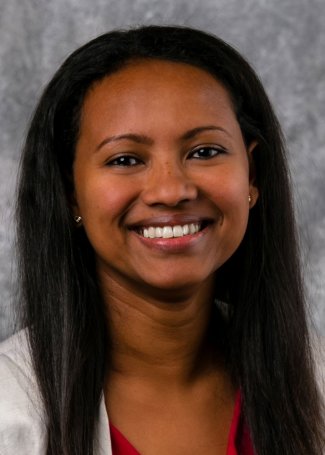
Breast cancer affects one in eight women in the U.S. and is the most frequently diagnosed cancer among women. Across the state of South Dakota, 102 women die from breast cancer each year.
Semhar Michael, an associate professor of statistics in South Dakota State University’s Jerome J. Lohr College of Engineering, has used her knowledge of numbers to research breast cancer rates in South Dakota.
Michael is originally from Eritrea, a country in East Africa. She earned her bachelor’s degree in mathematics there and continued her education at the University of North Dakota, receiving her master’s degree in mathematics and a minor in statistics. She then followed her adviser to the University of Alabama, where she attained her Ph.D.
After experiencing the University of Alabama, Michael decided the Midwest was best suited for her lifestyle.
“Moving here, my husband and I had one child, and we decided that we liked the quiet town for raising a family. It is peaceful and a slower way of life,” Michael said.
Michael has taught at SDSU for seven years and is responsible for graduate-level statistics courses that students take when working toward their master’s degrees and doctorates.
Collaborative research
Her research in health-related statistics started in 2016. Since coming to South Dakota, she has explored several areas of collaborative research, including working with engineers, nurses, pharmacists and Sanford Health. Health sciences research interested her the most because it was straightforward and easy to see how her findings were being implemented in real life.
Michael used South Dakota Department of Health data tracking the county and age of those who are diagnosed with breast cancer. One study compared the mortality rate due to breast cancer in South Dakota counties to the expected mortality rate in South Dakota overall.
Some factors she considered were poverty level, uninsured rate, education level and race. Since there is low racial diversity in South Dakota, the research was filtered by white and non-white. The risk of breast cancer mortality associated with having an education level lower than high school, as well as for non-white residents, was significantly higher than expected.
Some counties are affected by breast cancer more than others in South Dakota, Michael said. She determined this by using spatial clustering, a method that involves comparing multiple counties' mortality rates. By finding clusters that tend to be more susceptible to breast cancer deaths, researchers can find out why a certain area is at higher risk than others.
Education, screening considered key
“When we looked at breast cancer and spatial clustering, or disparities of breast cancer in South Dakota, our conclusion was education was very important,” Michael said.
A lack of education on the benefits of screening and screening options can hinder getting information about breast cancer out to the public.
“Education has to be done early starting at school levels,” Michael said. “By making education more prominent, we believe that it should help combat this problem.”
One way to reduce the risk of breast cancer is by getting regular screenings.
Whether it’s genetic testing or routine screening done early on, the preventative care helps the death rate drop significantly. According to the American Cancer Society, breast cancer that has not spread outside the breast has a 99% survival rate.
Republishing
You may republish SDSU News Center articles for free, online or in print. Questions? Contact us at sdsu.news@sdstate.edu or 605-688-6161.

